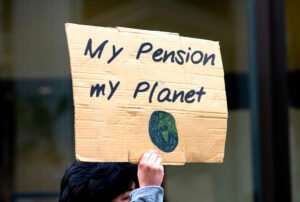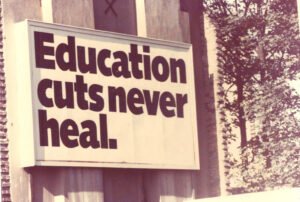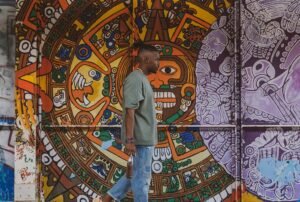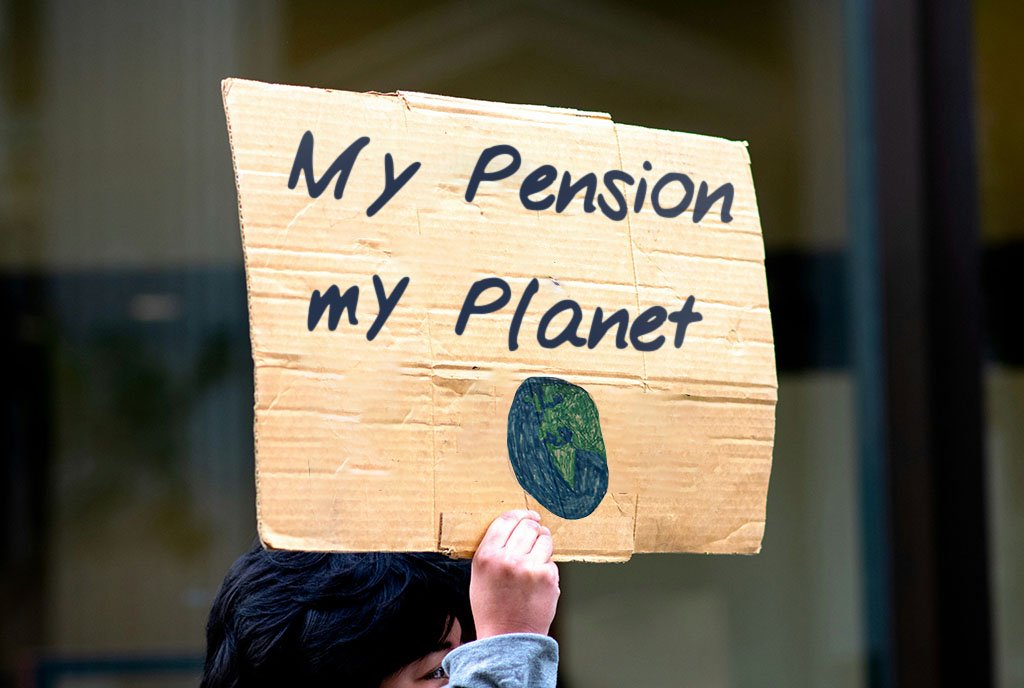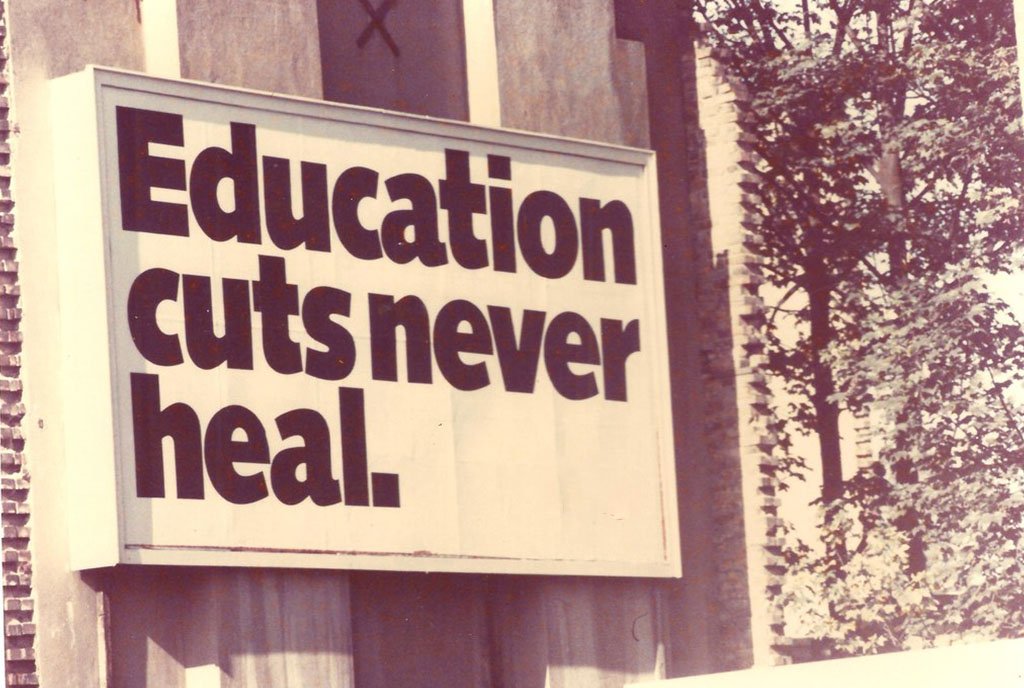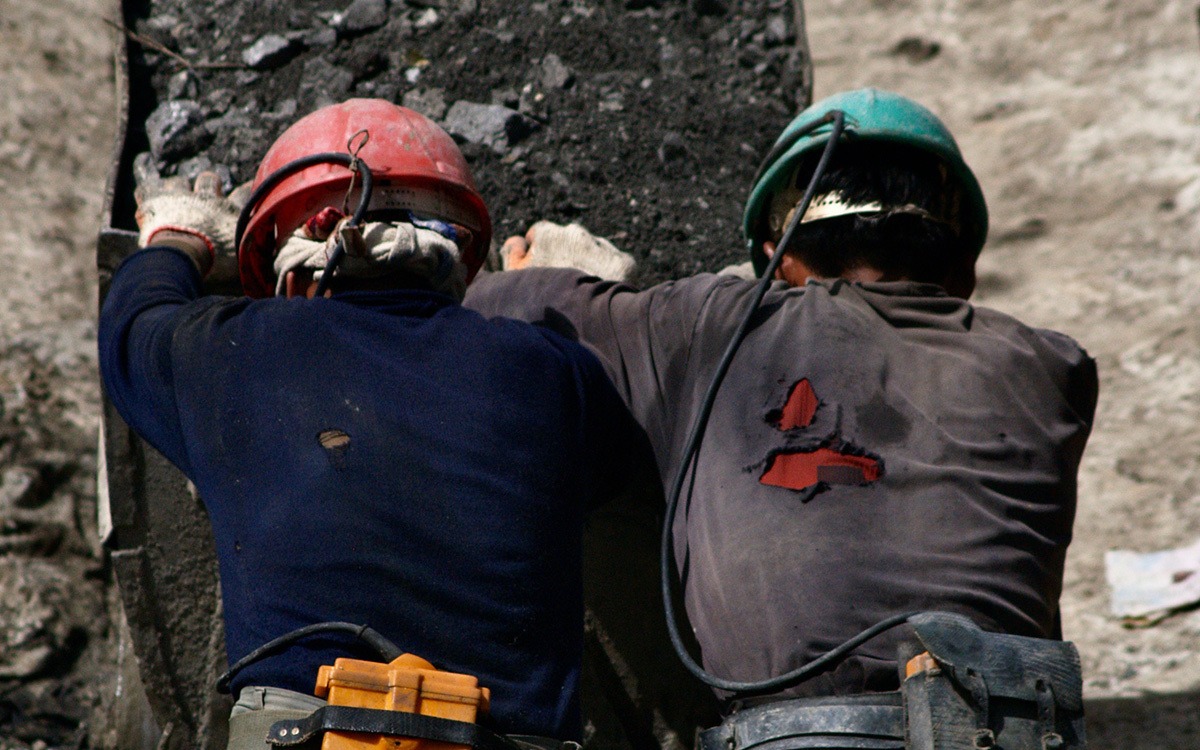
Kim Kelly is a writer on culture, labor, politics, working class resistance, and antifascism, among other topics, and a labor activist based in Philadelphia. A third-generation union thug, her work has appeared in the New Republic, the Washington Post, the Baffler, and Esquire. Her first book—FIGHT LIKE HELL: The Untold History of American Labor—is out now on One Signal/Simon & Schuster. In this interview, Kim Kelly talks about her work covering the coal industry and why workers deserve better.
This interview has been edited for length and clarity.
Rithika Ramamurthy: I want to begin by discussing your article for In These Times, which was an excellent overview of the young miners dying from black lung. Could you give our readers a little background on the disease, its history in the country, and its resurgence today?
Kim Kelly: There is this sort of prevailing opinion that coal mining is of the past. It’s a job that’s rendered in black and white, a guy with a pickaxe and coal dust smeared on his face, riding a mule down into the mines. It’s not seen as a modern industry by anyone except those who work or live in coal communities. The same goes for black lung, which is a very specific disease that impacts coal workers.
Black lung is the colloquial term for what is medically called coal workers’ pneumoconiosis. It has been around as long as people have been working in the coal mines and breathing in coal dust. It’s something that these communities have been struggling with for centuries now, and it is a progressive disease—there’s no cure. Once you get diagnosed and it’s in your lungs, it’s not going anywhere and you’re not getting any better. Exercise and a good diet might help for a little while, but you’re still going to end up on an oxygen tank, and you’re still eventually going to smother to death.
One of the things so important to emphasize about black lung is that no one needs to get this disease. It’s completely preventable, at least according to the various experts I spoke to, including veteran coal miners, mine safety experts, and health experts. For a while, it wasn’t as big of a problem: the implementation of The Federal Coal Mine Health and Safety Act, passed in 1969 and updated in 1977, instituted a lot of important health and safety protections. It also created the Mine Safety Health Administration (MSHA), which is tasked with overseeing the welfare of these workers. The Mine Act had an immediate and massive impact: black lung cases dipped dramatically and became an issue for folks who had spent whole lifetimes in the mines.
Once you spend 30 to 50 years down there, you breathe in a lot of coal dust, and it does catch up with you. But recent reporting and the latest data from the National Institute for Occupational Safety and Health shows that around 15 years ago, we saw a sharp rise in cases. Before this, around one in 30 coal miners who had spent 20 or more years underground were diagnosed with black lung. Now, it’s one in eight. Two decades—20 years—sounds like a long time, but a lot of these people started working in the mines fresh out of high school, so they’re under 40. I know of at least two men, one of whom is down to 50% lung capacity and the other of whom is awaiting a lung transplant, who are just 32 years old. Many of the miners I spoke with have spent 20 years underground and haven’t gotten screened yet, but they can’t run, jump, or breathe the way they used to. It’s not an old man’s disease anymore.
RR: How do miners discover that they have black lung, and what recourse do they have to protect their health?
KK: To get a diagnosis, you have to get tested and screened. Not everybody wants to do that or has the time, because of their jobs and their rural locations. I think the actual diagnoses may [be] a bit underreported.
Once you do get the diagnosis, it only gets worse from there. There are different levels of being impacted by black lung, and there are some measures like Part 90 under the Coal Mine Health and Safety Act that miners can take to limit their exposure to coal dust after a diagnosis, such as moving to healthier parts of the mine. But unfortunately, not many of them avail themselves of that option.
One of the big reasons for this is that the coal mines in Central Appalachia, specifically Kentucky and West Virginia, aren’t union mines. That means that miners don’t have a union supporting their needs or helping them exercise their rights after getting black lung. They might not know that they have the right to work somewhere less dusty, or they may not feel empowered to ask without retaliation.
Sam Petsonk, one of the main lawyers helping miners, says there has been a slight increase in miners accessing their Part 90 rights, but the numbers are still very low—under 15 miners in West Virginia have used it. Because if you’re 65 and get a black lung diagnosis, you can just retire and access the black lung benefits that you’re owed. But if you’re 40 and you have kids, that’s a lot of living left to do. It might be better for you to keep working rather than going through the Byzantine process of applying for and receiving black lung benefits, especially because black lung benefits are very low. They’re capped at under $1,500 for a family of four, which doesn’t go very far, even in rural West Virginia.
RR: You wrote about the Mine Safety Health Administration (MSHA) and its somewhat ineffective standards for protecting coal miners’ health and safety. What standards of government safety and regulation have been imposed so far, and what do miners hope will change?
KK: Legislative responses to the black lung crisis are usually reactive. We’ve seen legislation targeted at the black lung benefits system, making sure that victims are able to receive compensation and health care. But in May, there was a federal rule proposing an update to the amount of respirable crystalline silica dust that miners can be exposed to at work.
Right now, there is a federal silica standard for every other worker in the country except coal miners, and that standard is 50 micrograms of exposure during a ten-hour shift. Coal miners can be exposed to 100 micrograms—double the legal amount of every other occupational health standard. The proposed rule has now wound its way through the relevant government agencies and recently made it into the Federal Register. There is now a public comment period, after which the government will work to finalize it.
Silica is 20 times more toxic than coal dust. It tears up lung tissue and creates cancerous nodules. Miners today are being forced to dig through more layers of rock to get to the coal, which means more silica. We’ve been mining Appalachian coal for centuries now, and eventually, it thins out. One miner told me their “daddies and granddaddies got all the good coal, and now we’re left digging up the trash.”
Coal mining technology has also advanced significantly since the 1970s. It’s not shovels and pickaxes; it’s massive, heavy machinery down there. One United Mine Workers of America (UMWA) member told me that we can now mine the same amount of coal in 24 hours that it took two weeks to mine in the 1970s. Productivity has increased significantly, which creates more silica dust, which gives more people black lung. And the coal companies in charge don’t want to slow down and implement safety procedures. They don’t want to cede a single moment to anything but the pursuit of profit. Because they know that coal is on its way out, and they want to squeeze every little itty-bitty piece of profit they can before it’s all gone.
This new rule is just a start, but it’s proactive and preventative. I know that the United Mine Workers of America, the union representing most coal workers in this country, wanted to see it go further than 50 micrograms. That still sounds like too much, but I suppose it’s baby steps when it comes to changing federal regulations.
RR: You’ve reported on the Warrior Met Strike in Alabama, where coal miners stood up to coal companies. That strike was long and protracted, in part because of the company’s convoluted ownership by hedge funds and asset management companies. How do you think Wall Street plays into making these changes happen?
KK: When you’re striking a company like Warrior Met—a company with confusing layers of ownership and more money than God—it’s hard to know who is even in charge or where the money is all going. It wasn’t going to Brookwood, Alabama; it was going to offices on Wall Street and overseas like the coal itself. Conglomerates of corporate interests want to make money, and they can outlast human beings, so there’s nothing stopping them.
“People should pay attention to the coal industry crisis because it shows that workers in this country are seen as disposable. Their humanity is a liability.”
Sign up for our free newsletters
Subscribe to NPQ's newsletters to have our top stories delivered directly to your inbox.
By signing up, you agree to our privacy policy and terms of use, and to receive messages from NPQ and our partners.
Warrior Met was able to legally hire replacement workers, cozy up to law enforcement, and make friends with the local courts that levied injunctions that hurt the strike. They even got elected officials like Senator Tommy Tuberville, who is supposed to represent the people of Alabama, to stand up at a hearing held by Senators Bernie Sanders and Elizabeth Warren about the impact of private equity on the strike and read a statement from the company. When you have that much money, you can influence anyone.
The UMWA put up a valiant effort. They struck for two years and spent over $30 million, with donations and help from unions and workers across the country. But they didn’t get the win they deserved because labor law wasn’t really on their side; the government wasn’t on their side; capital wasn’t on their side. They’re still fighting it out, and the National Labor Relations Board just ruled that the company has been bargaining in bad faith, so they will likely go back to the table. But at this point, how many people have had to go back to work or left to find other jobs? It’s not fair that they were not just working with one company or boss, it was so many rich people and shareholders that refused to let UMWA upset the exploitative status quo.
RR: We all know that this is how capitalism works. Can you talk a bit more about how capitalism expects people to suffer physically for corporate profit, both in the coal industry and beyond it?
KK: There is a legacy of extraction in Appalachia. Whether it’s natural resources or political power, people with more money have come in, pulled out everything they could, left behind sick and broken communities, and went back home with their profits when there was nothing left to take. It’s something we’ve seen since the dawn of the industrial revolution, but this is a microcosm of the rampant exploitation and lack of oversight that defines the experience of the American worker. In this world, someone rich can compel you to work harder in dangerous conditions—to sacrifice everything that makes you human—because otherwise you starve or struggle. It’s a perennial catch-22 when you’re forced to sell your labor to survive under the current capitalist system: there’s not a way to win unless you find your way into the ranks of wealth and power and can turn around and crush other workers.
“We know everybody needs air, but it seems like some people are more entitled to clean air than the rest of us.”
People should pay attention to the coal industry crisis because it shows that workers in this country are seen as disposable. Their humanity is a liability. It’s something that many workers experience in one way or another. Coal miners are an archetype of the proud, blue collar American worker. Politicians like to trot them out for photos and talk about how much they care, but when these workers are dying, struggling, and unable to breathe, who’s making them a priority? Who is visiting or pushing helpful legislation or investigating why proposed standards for the coal industry take twice as long to pass?
Coal miners are complicated. The world is on fire, and coal isn’t helping, but these are brutal jobs. We would like to think there’s something better, easier, and more environmentally friendly for all 40,000 of these folks to do. But they’ve been offered next to nothing, and now almost no one’s paying attention as they’re dying to keep this floundering industry afloat. If it can happen to the coal miners, it can absolutely happen to any of us.
I was talking to a former coal miner from Mingo County named Danny Witt, who was diagnosed with black lung 35 years ago. He has spent that time advocating for himself and his fellow miners. When I told him about my granddad who died of asbestosis, he said, “We call that the white lung.” It’s all so connected. You talk to a garment worker in Los Angeles who has been coughing and finds out she has byssinosis, which is called the “brown lung.” This is not new; we know that workers need to breathe clean air. We know everybody needs air, but it seems like some people are more entitled to clean air than the rest of us.
RR: How would you frame these issues in the context of climate change, in terms of just transition?
KK: I was recently telling a miner about my research, and he said: “If you keep writing about this black lung stuff, people are gonna hate coal even more.” Writing about the terrible conditions of the mining industry is not going to win coal any fans. But through understanding the coal industry, I learned that a lot of these miners, especially in places like Alabama, are mining metallurgical coal, which is mined to make coke, which is used to make steel, which is used to make windmills and green infrastructure. Coal isn’t just the thing keeping the lights on, it’s being shipped overseas to Asia and Europe, to places that are investing in green infrastructure.
Often when I talk about problems in the coal industry, people say: “Just stop coal mining, problem solved.” But that will have a ripple effect on the people that work in the industry and infrastructure in general. Even if we wanted to transition to an entirely green economy tomorrow, there will still be people going into the coal mines, breathing in coal dust. I never want to be misunderstood as a coal cheerleader—I would like to survive; I would like the planet to not explode while we’re still on it. The climate crisis is a real and terrifying issue. But I also want to ensure that the workers doing these jobs aren’t demonized or left behind.
Many of the miners are also proud of their jobs. Taking jobs away with no alternatives is going to send miners straight to the Walmart down the road for $10 less an hour. They’re not going to take that deal unless they’re offered good, union employment in a battery factory, another technological industry, or construction—something that uses existing skill sets. We can’t just teach miners how to code.
“These companies build death into their bottom line.”
Coal mining is one of [the] hardest jobs in America, and it comes with a tough and rich legacy. Being a coal miner is different than working in an office—both jobs are valid and important, but most people stick with what they know and what they’re good at doing. Some miners told me that they feel most at home underground, and others said they would be happy to not go into the mines for twelve hours at a time. There hasn’t been enough attention paid to the actual human beings doing this work and what they want. It’s a matter of engaging with these workers and treating them like equal partners—not as a problem.
RR: You recently met with people on Capitol Hill last week, including Representative Ro Khanna (D-CA), who commended your reporting on this issue and said: “The federal government should hold companies accountable for putting workers in harm’s way.” What do you think the federal government will, can, or should do to avert widespread health crises like this one?
KK: One of the first things that helpful politicians do is fund departments that can protect people, like the Department of Labor, the National Labor Relations Board (NLRB), or MSHA, to give them more resources and more staff. The more they have, the more labor protections they can enforce or mine inspections they can conduct to see where the biggest problem areas are, and the more power they then have to create consequences for the corporations that are blowing off their obligations and actively resisting regulations.
These companies aren’t playing fair. It’s like fining Amazon a few grand when another worker dies in their factory. The costs are so low—what is keeping them from doing exactly what they’re doing? These companies build death into their bottom line.
I would love to see the government take a really active role in public education around issues like black lung and mine safety. MSHA just released an app that has information about mine safety and regulations. People need to know that this is an issue that could impact them. Many of the younger miners I’ve spoken to don’t think it’s something that they need to worry about. They think, “I’m young, I’ll live.” Knowing the risks and the realities of this horrible disease could go a long way. Fixing our terrible labor laws would also help.
There are a million things that powerful politicians could do. I don’t know how much appetite they have for doing them. People like to talk about vulnerable populations or specific communities, but how often do they tell companies to change things? Some folks on the Hill are paying attention—[Senator] Bernie Sanders’ staffers had read my piece—but others had no idea what I was talking about. Fixing the coal industry seems like an easy, bipartisan win: “We want to help people in Appalachia who are working to keep the world built. We don’t want them to die.” Seems easy, but we’ll have to see how ambitious these politicians are feeling.
If we forget about these folks in Appalachia who are suffering from black lung, we’ll forget about the farm workers in California that are boiling to death in the fields, we’ll forget about the cafe workers dealing with violent customers, we’ll forget about the construction workers who are dealing with silicosis. All worker safety is connected, and we can’t afford to ignore anybody when it comes to the toll that capitalism is extracting from our bodies.




